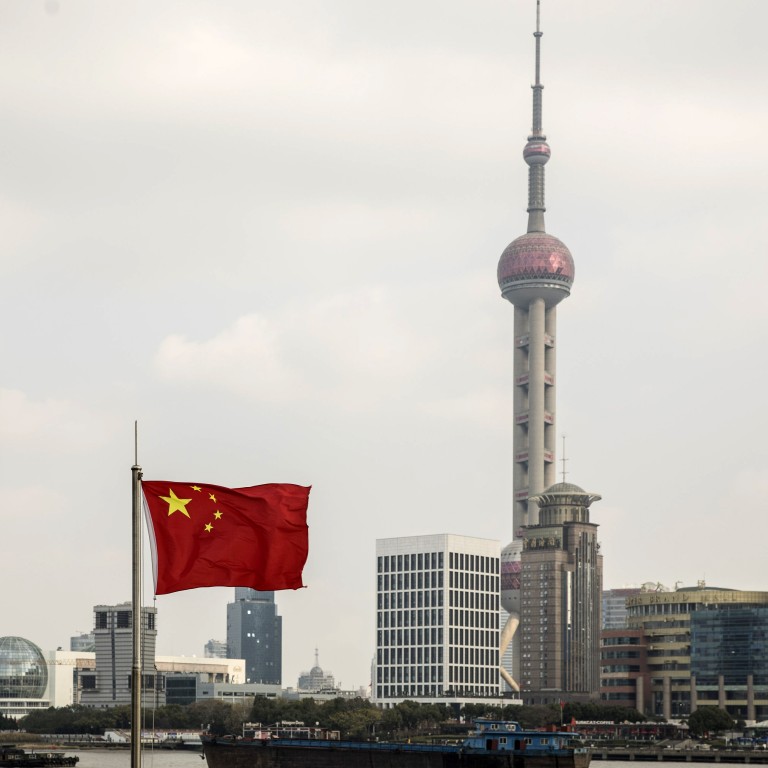
China has ‘price to pay’ for cutting US dollar share of forex reserves, analysts say
- Analysts raise doubts whether Beijing has already gone too far in turning away from the US dollar
- China shed light on secretive foreign exchange reserves by releasing investment returns and US dollar share in decade to 2014
China’s sharp reduction in US dollar asset holdings has increased the risk of its investment portfolio, analysts have said in response to a disclosure of historical data by the agency charged with managing its foreign exchange reserves.
The State Administration of Foreign Exchange (Safe) on Sunday disclosed that it had cut the portion of US dollar-denominated assets in its reserves portfolio to 58 per cent in 2014, below the international average of 65 per cent and down sharply from the 79 per cent of China’s holdings in 2005.
Aidan Yao, senior emerging Asia economist at AXA Investment Managers, argued that US assets, particularly US Treasury securities, are “the most liquid and safe assets in the world”, and so cutting their share in the portfolio was, by definition, a risky move.

“China does have to pay a price – compromising liquidity and safety of their portfolio – for diversifying away from the US dollar,” Yao said.
“There is no alternative market that can offer China the ease and safety in trading that is as deep and broad as the US dollar market,” Ding said.
If Safe maintained the same weighting after 2014, China would have about US$1.8 trillion of its reserves in US dollar assets today. US Treasury data showed that China held US$1.1 trillion of US Treasury securities as of the end of May.
The real question to be asked is why not give us figures up to 2018 or even 2017? They already have that [data] so that would be a stronger show of increased transparency
The exact investment composition of China’s foreign exchange reserves remains shrouded in secrecy, making it nearly impossible to see the true risk and performance at the moment, he added.
“The real question to be asked is why not give us figures up to 2018 or even 2017? They already have that [data] so that would be a stronger show of increased transparency,” Chin said.
Nevertheless, analysts welcomed Safe’s disclosures as a step towards greater transparency. Before Sunday, little was known about how Safe managed China’s reserves.
Instead, every January 1 over the last decade, China’s central bank chief paid a visit to a drab building within a stone’s throw of the People’s Bank of China’s head office in Beijing.
In the face of complicated and changing international financial markets, a diversified investment strategy has been implemented for China’s foreign exchange reserves that has achieved steady returns
“In the face of complicated and changing international financial markets, a diversified investment strategy has been implemented for China’s foreign exchange reserves that has achieved steady returns,” the agency said.
The agency reminded readers that it had won two “excellence awards” from AsiaInvestor in 2014. AsiaInvestor is a quarterly publication by UK-based publishing group Haymarket Media.
Safe, an arm of the central bank that reports directly to China’s top leadership, highlighted in its annual report two main strategies used to manage the country’s reserves.
One is “diversification” of assets into multiple currencies, resulting in the sharp decline reliance on US dollar-denominated assets. The other is a rigid risk control process based on the twin principles of maintaining value while maintaining zero tolerance for major risks.
Safe said it has five layers of checks for its assets – risk policies, risk assessment and monitoring, compliance inspection, internal auditing, and external auditing – designed to manage all types of risks, including “credit risks, market risks, liquidity risks, operational risks and other risks”.
China’s foreign exchange reserves ballooned from US$51.6 billion at the end of 1994 to a peak of nearly US$4 trillion by mid-2014. The reserves dropped by about US$1 trillion in the year following China’s stock market rout in the summer of 2015, causing Beijing to impose draconian capital account controls over outbound payments and investments.
While the reserve size was stabilised at about US$3 trillion over the past three years, the size is unlikely to grow significantly, as China’s current account surplus is projected to shrink.
At the same time, China’s efforts at making the yuan an international currency have only achieved limited success. The yuan’s share of total reserves held by global central banks remained a modest 1.84 per cent in the first quarter of 2019, well below the US dollar’s 58.14 per cent, the euro’s 19.03 per cent, and the yen’s 4.94 per cent.

